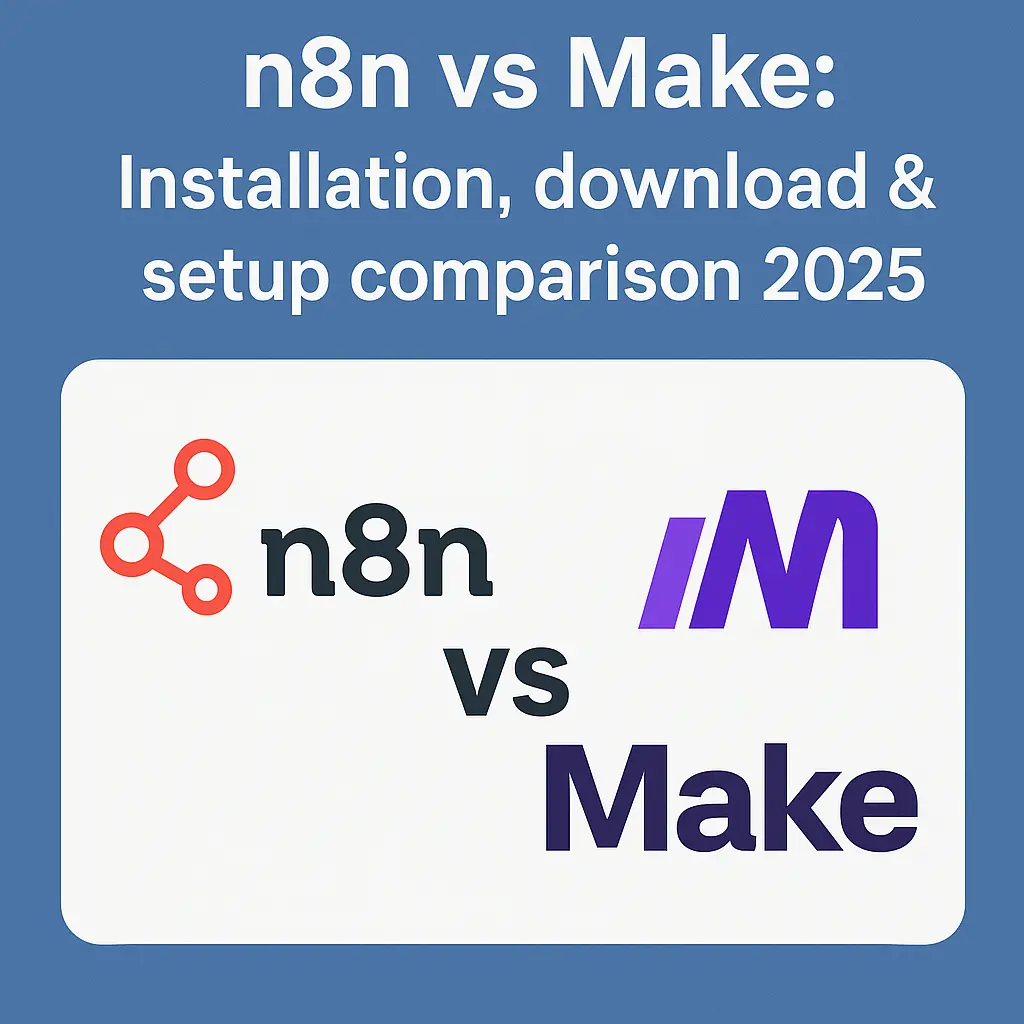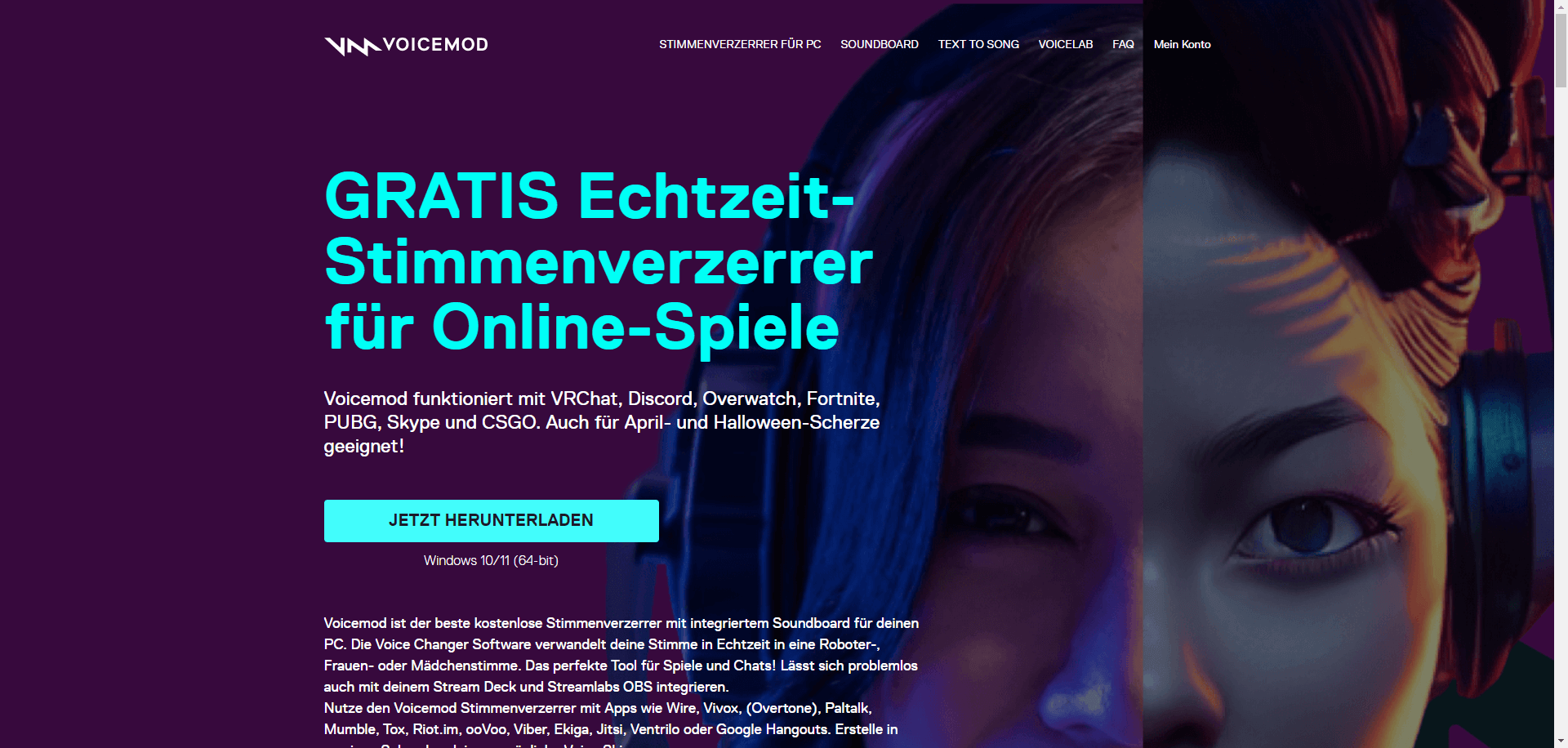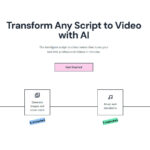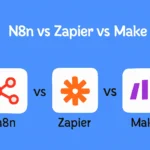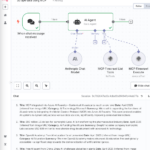This comparison between n8n and Make will help you find the right automation platform for your specific requirements. Both tools have different strengths in terms of installation, technical control and user-friendliness.
- Self-hosting vs. cloud is the fundamental choice between n8n and Make. While n8n offers you full data control with its self-hosting approach, Make scores with its immediate readiness for use without any prior technical knowledge.
- The installation effort varies considerably between the two platforms. N8n requires 30 to 60 minutes of technical setup with server resources (at least 1 GB RAM), while Make is ready to go in less than 5 minutes via the browser without any hardware requirements.
- The integration library differs in terms of quantity and quality. Make offers over 2000 pre-built modules with intuitive drag-and-drop operation, while n8n with 400 integrations allows more customization depth through user-defined JavaScript extensions.
- Cost structures favor different usage scenarios. N8n becomes more cost-effective as usage increases (from around 15,000 operations per month), while Make’s transparent pricing model makes it more economical for smaller teams or sporadic use.
- Maintenance costs and technical control are in direct proportion. N8n requires regular updates and server maintenance (2-4 hours per month), but offers full data protection control. Make completely eliminates maintenance tasks, but processes data in the provider cloud.
The choice ultimately depends on your technical know-how, data protection requirements and desired speed of entry. Advanced teams often use both platforms in parallel for different automation requirements.
Do you want to get started with automation in 2025, but don’t know whether to use n8n or Make? 🚦 Then you’ve come to the right place. Over 55% of all SMEs are faced with precisely this decision: maximum flexibility through self-hosting – or would you prefer “zero IT effort” via the cloud?
The right choice for your team can mean finally getting rid of tedious copy-paste jobs – or dealing with months of installation frustration. Of course, if you take a wrong turn, you’ll either end up paying for it or severely limiting your creativity.
We’ll take you by the hand and check it out for you:
- Installation & download: How much “tinkering” does each solution really need?
- Setup & maintenance: How much time and effort do you need to invest before the first live workflow?
- Costs, data protection & scaling: Where are the hidden costs lurking?
- Practical tips & mini FAQs: What are the pitfalls – and how do you overcome them?
Whether you are working for your marketing, product management or growth hacking: After this article, you’ll know which tool will become your workflow buddy – and which you’d rather leave alone. Our principle: radically clear, hands-on, without glorification and empty buzzword bingo.
So: Docker or drag & drop? Let’s jump straight in – and find out which automation setup really suits your pace in 2025.
What is the fundamental difference: self-hosting vs. cloud-only
The choice between n8n and Make comes down to the basic architecture philosophy. While n8n gives you full technical control over your automation infrastructure, Make focuses on maximum user-friendliness without technical hurdles.
n8n: The technical flexibility of self-administration
N8n requires a download from the GitHub repository or npm package and subsequent installation on your own infrastructure. You have three main paths available:
- Docker installation (recommended for production environments)
- npm installation for developers with Node.js knowledge
- Desktop app for local tests and smaller projects
The free open source version gives you complete control over the server, database and all processed information. You decide where your workflows run and how your data is stored.
Make: Get started right away without any technical hurdles
Make works as a pure software-as-a-service solution directly in the browser. After creating an account, you can start creating workflows immediately – no download, no installation, no server management required.
The platform takes over automatically:
- Hosting and infrastructure management
- Updates and maintenance
- Scaling with increasing requirements
- Backup and availability
💡 Tip: Which approach suits you?
Choose n8n Self-Hosting if you have basic technical knowledge, need data protection control or want to save costs in the long term. Choose Make if you want to be productive within minutes and don’t have the IT resources to devote to server management.
The difference: n8n requires a one-time setup time of 30 to 60 minutes, but offers unlimited customization options. Make starts in under 5 minutes, but ties you to the predefined cloud infrastructure.
The n8n installation process: explained step-by-step
Installing n8n requires technical preparation, but gives you complete control over your automation infrastructure. The process typically takes 30 to 60 minutes, depending on your chosen installation method.
Download and preparation
Before installing, check the system requirements: at least 1 GB RAM, 2 GB or more is recommended. You have three main options for the download:
- GitHub repository: Latest developer version with the latest features
- npm package: Stable version for Node.js environments
- Desktop app: Pre-compiled application for local testing
Node.js version 16 or higher is required for all installation paths except Docker.
Installation with Docker (recommended way)
Docker simplifies the installation considerably. You create a docker-compose.yml file with the following steps:
- Container configuration: Define n8n image and database container
- Set environment variables: Webhook URL, time zone and database connection
- Set up volumes: Persistent data storage for workflows
- Start container:
docker-compose up -dstarts all services
💡 Tip: Always use an external volume for /home/node/.n8n to avoid data loss during updates.
Alternative installation methods
Further options are available for special requirements:
- npm installation:
npm install n8n -gfor system-wide installation - Desktop app: Download n8n.io for Windows, macOS and Linux
- Cloud hosting: Managed n8n cloud from 20 euros per month
Initial configuration and security
After installation, set up your admin account via the web interface. Configure SSL certificates for HTTPS access and plan your backup strategy for workflow data and configuration files right from the start.
The Docker installation offers you the best balance of simplicity and control options for professional automation projects.
Make setup: Ready to go in 5 minutes
Make offers maximum user-friendliness without any technical hurdles. You don’t need any downloads or installations – just a web browser and a few minutes for the complete setup process.
Account creation and onboarding
The registration process at Make is deliberately kept simple. After registering for free with your email address, you will be given immediate access to the platform, while the verification email is sent in the background.
The dashboard welcomes you with an interactive onboarding tutorial that explains the most important functions in around 3 minutes. Particularly valuable: The template gallery shows over 1,000 ready-made automations, sorted by categories such as marketing, e-commerce or productivity.
💡 Tip: Start with a template from your specialist area – this saves time and immediately shows practical application options.
Interface tour and first automation
The drag-and-drop editor works intuitively like a visual flowchart tool. You drag apps from the left sidebar into the workspace and connect them with a simple click.
Each automation starts with a trigger (for example, “new email in Gmail”) and leads to one or more actions (such as “enter data in Google Sheets”). The connecting lines show the data flow visually.
Test runs can bestarted by clicking on the “Run once” button. Make shows you in real time which data is being transferred between the apps – perfect for debugging and understanding automation.
Make transforms complex workflow automation into a 5-minute task for non-technicians. The combination of instant access, visual user guidance and extensive template library makes getting started smoother than with almost any other automation platform.
A direct comparison of technical requirements
The choice between n8n and Make depends largely on your technical resources and IT preferences. While n8n as a self-hosting solution requires its own server infrastructure, Make runs entirely in the provider’s cloud.
Server and hardware requirements
n8n requires dedicated resources for the self-hosting variant. The minimum is 1 gigabyte of RAM, but for productive environments you should plan for at least 2 to 4 gigabytes. For more complex workflows with many parallel executions, the memory requirement increases accordingly.
The CPU requirements vary depending on the complexity of the workflow. A standard VPS with 2 CPU cores is sufficient for small teams; larger implementations require correspondingly more computing power.
Make completely eliminates hardware requirements, as all processing takes place on the provider’s servers. All you need is a stable internet connection and an up-to-date web browser.
Maintenance and updates
The maintenance differences are significant. n8n requires regular manual updates, security patches and backup management. You need to schedule downtime windows and test updates before they go live.
Make takes care of these tasks automatically. Updates take place transparently in the background without you having to intervene. According to the provider, availability is over 99.9 percent.
Security and compliance aspects
With self-hosting, you bear full responsibility for data protection and security. This means SSL certificates, firewall configuration and regular security updates are in your hands.
Both platforms meet GDPR requirements, but the implementations differ:
- n8n: Complete data control, local storage possible
- Make: Data processing in EU data centers, automatic compliance features
💡 Decision support: Do you have IT expertise and want maximum control? Then n8n. Do you prefer maintenance-free automation? Make is the better choice.
Integration and connectivity: 400 vs. 2000 apps
The number of available integrations regularly determines the success of your automation strategy. n8n offers 400 integrations with maximum customization depth, while Make provides the broadest coverage with over 2000 pre-built modules.
n8n: Deep customization with 400 integrations
n8n follows an API-first approach that gives you limitless flexibility. You can develop your own nodes with JavaScript and even integrate complex data processing logic directly into the workflow.
The key strengths:
- Custom node development for any API or internal systems
- Community marketplace with additional integrations
- Webhook support for all REST APIs without prefabricated nodes
- Complete control over data flow and processing
Make: Broad coverage with 2000 ready-made modules
Make scores with the largest integration library on the market. Most popular tools work immediately without additional configuration or programming.
Decisive advantages:
- Out-of-the-box integrations for Salesforce, HubSpot, Shopify etc.
- Template system with ready-made workflow blueprints
- Visual mapping between different apps without code
- Automatic updates for API changes by the Make team
Practical comparison: same automation, different paths
Example Slack-Google Sheets email workflow: Make requires 10 minutes setup with drag-and-drop, n8n requires 30 to 60 minutes for configuration and testing.
In the long term, n8n shows its strengths: Maintenance effort remains consistently low, while Make requires occasional template adjustments for API updates.
The decision depends on your team: broad coverage without programming speaks for Make, deep customizability and cost control for n8n.
Cost-benefit analysis for 2025
The question of costs regularly determines the choice of platform – but the hidden costs can completely throw your calculations out of kilter. We calculate both approaches transparently.
n8n price structure: flexible, but with pitfalls
The self-hosted version is free, but server costs of 20 to 100 euros per month are added. For professional teams, n8n Cloud starts at 20 euros per month for up to three active workflows.
The hidden costs of self-hosting:
- Server hosting: 20 to 150 euros per month depending on requirements
- Developer time for setup: 16 to 40 hours initially
- Maintenance and updates: 2 to 4 hours per month
- SSL certificates and backup solutions: 10 to 30 euros per month
Make pricing: Transparent, but scaling-intensive
Make starts with 1,000 free operations per month – perfect for initial tests. The paid plans start at 9 US dollars per month per user for 10,000 operations.
Typical cost traps as usage grows:
- Operations increase surprisingly quickly with complex workflows
- Multi-step automations consume multiple operations per run
- Team licenses quickly multiply the basic costs
💡 Tip: ROI calculation after 12 months
Small team (up to 5 people): Make costs 540 to 1,080 euros per year, n8n self-hosting approx. 800 to 1,500 euros including working hours.
Medium-sized team (10 to 20 people): n8n is significantly cheaper than Make at 1,200 to 2,000 euros per year and costs 2,160 to 4,320 euros.
The rule of thumb: from 15,000 operations per month or with more than eight active users, the technical expenditure of n8n pays off financially. Make, on the other hand, scores points for sporadic use and when developer time is more expensive than the ongoing license costs.
Practical example: Medium-sized marketing team
Let’s take a look at how a five-person marketing team from a medium-sized company automates its lead generation – once with n8n, once with Make.
Initial situation and requirements
The team at Mustermann GmbH would like to link three critical systems:
- HubSpot CRM for lead management
- Mailchimp for newsletter campaigns
- LinkedIn Sales Navigator for social selling
Budget: 500 euros per month. Technical expertise: One employee with basic programming skills.
n8n implementation: The technical path
Server setup takes 2 to 3 days and requires knowledge of Docker. The technically skilled employee installs n8n on a virtual server for 25 euros per month.
Workflow development takes 1 to 2 weeks:
- Program custom JavaScript nodes for LinkedIn API
- Configure HubSpot webhook triggers
- Automate Mailchimp segmentation by lead status
In addition, 8 hours of work for documentation and team training.
Make alternative: The express approach
Account setup completedin 2 hours: registration, “CRM to Email Marketing” template selected, API key entered.
Customization takes only 1 to 2 days:
- Activate pre-built HubSpot-Mailchimp connection
- Add LinkedIn module via drag-and-drop
- Define filter rules via graphical interface
Team onboarding takes place in a one-hour training course – no programming knowledge required.
Long-term evaluation after 6 months
n8n shows higher maintenance intensity: two server updates, one API outage due to LinkedIn changes, 4 hours of maintenance per month.
Make runs with low maintenance: automatic updates, only one manual adjustment required for Mailchimp changes.
Productivity gain with both solutions: 30 percent less manual work, but different team preferences. While the developer appreciates n8n’s flexibility, four colleagues prefer Make’s intuitive operation for spontaneous adjustments.
Migration and change scenarios
Platform switches between n8n and Make are becoming more common as teams better understand their automation requirements. Most migrations are due to changing priorities or increased technical expertise.
From Make to n8n: When and how
The most common reasons for switching are rising Make costs with high workflow volumes and the desire for complete data control. Companies with over 50,000 monthly operations regularly pay more than 200 euros per month for Make.
💡 Tip: If you spend more than three hours a week on workflow optimization, this regularly justifies switching to n8n.
Prepare workflow migration
Make does not offer a direct export for n8n import. You have to recreate each workflow manually in n8n:
- Document all active Make scenarios with screenshots
- Identify critical data connections and API keys
- Test n8n equivalents for each Make app connection
- Plan one week of parallel operation for stability testing
From n8n to Make: The express switch
Maintenance fatigue drives most n8n-to-Make switches. Teams without dedicated IT resources regularly invest 5 to 10 hours per month in server maintenance and updates.
Optimize workflow transfer
Make’s template system significantly speeds up migration. Most n8n workflows have Make equivalents in the template gallery:
- Search for pre-built Make templates first
- Identify missing integrations early in the process
- Document custom JavaScript logic for Make alternatives
Migration time is typically two to four weeks for complex setups. Teams with more than ten active workflows should plan a phased migration over several months to avoid business disruption.
Decision support: Finding your optimal platform
The choice between n8n and Make depends on six critical factors that will determine the success or frustration of your automation projects. This handy evaluation matrix will guide you to the best solution for your team.
Quick assessment: The 6 crucial questions
Answer these questions honestly to identify your ideal platform:
- Technical expertise: will someone on your team be able to manage Docker containers and configure servers?
- Data control: Does sensitive data need to remain on your own servers?
- Resources: Is 20 to 50 euros per month available for servers plus maintenance time?
- Timeframe: Should the first automation work in hours or weeks?
- Integrations: Do you need customized connections or will standard apps suffice?
- Scaling: Are you planning hundreds of complex workflows or moderate automation?
Scoring matrix for objective evaluation
Point system (1-5 per category):
- Technical know-how (high = n8n, low = make)
- Data protection requirements (critical = n8n, standard = make)
- Setup speed (immediate = make, patient = n8n)
- Budget flexibility (fixed = make, variable = n8n)
Evaluation: 12 points for technical criteria speak for n8n, 12 for business criteria for Make.
Hybrid approaches and combinations
You don’t have to choose one platform. Clever teams use both in parallel:
- Make for fast marketing automations and standard integrations
- n8n for complex data processing and internal system connections
- Migration strategy: start with Make, switch to n8n as requirements grow
This dual-platform strategy maximizes flexibility while allowing teams to gradually build technical expertise.
Your decision should be based on specific project requirements, not theoretical benefits. The best automation stack is the one your team actually uses.
Conclusion
The choice between n8n and Make determines the future viability of your automation strategy. While Make gives you instant success without technical hurdles, n8n offers unlimited customizability for more complex requirements.
The most important insights for your decision:
- Make is perfect if you want to become productive within hours and standard integrations are sufficient
- n8n is the better choice for high workflow volumes, special data protection requirements or if technical expertise is available
- Cost break-even is around 15,000 monthly operations – above this, n8n becomes significantly cheaper
- Hybrid approaches work: Start with Make, migrate to n8n as requirements grow
- The maintenance effort differs considerably: Make runs maintenance-free, n8n requires 2-4 hours of monthly support
Your next steps:
Start with a free 30-day trial of both platforms. Set up the same simple workflow in parallel – for example “email to spreadsheet to Slack message”.
Evaluate not only the setup time, but also the ease of use for your entire team. The best automation platform is the one that is actually used.
The future belongs to teams that see automation as a core competency – not a necessary evil. No matter which platform you choose: The first workflow is more important than the perfect platform choice.

